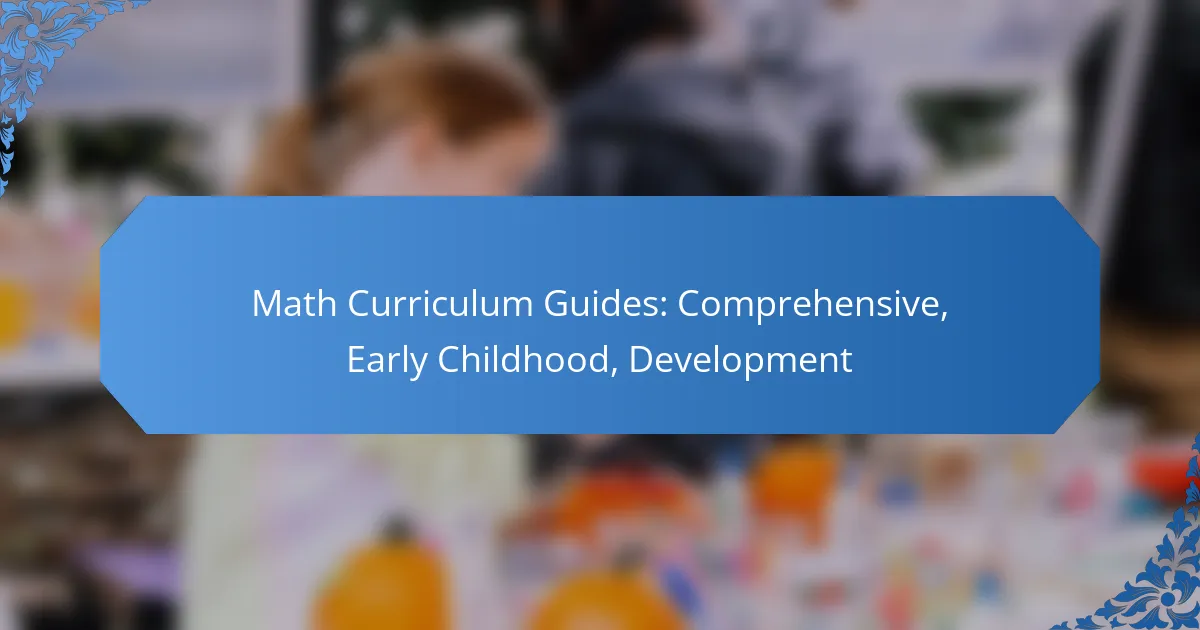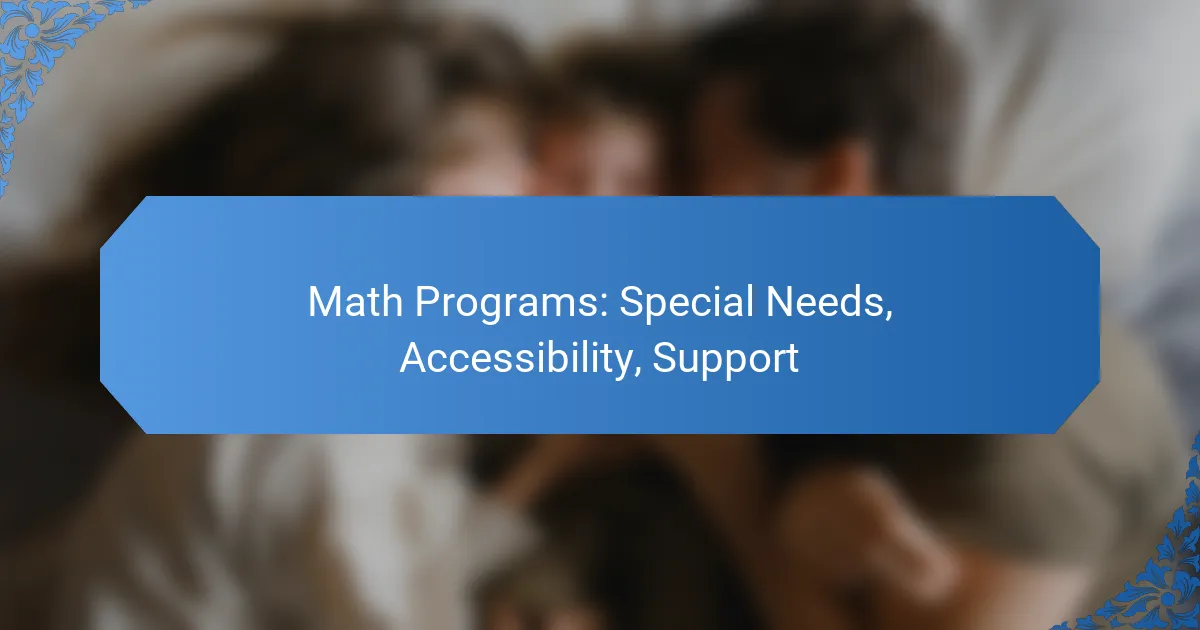Innovative math curriculum resources play a crucial role in enhancing student engagement and understanding by making complex concepts more accessible. By integrating technology and interactive teaching tools, educators can create a dynamic learning environment that fosters deeper comprehension and retention of mathematical principles.
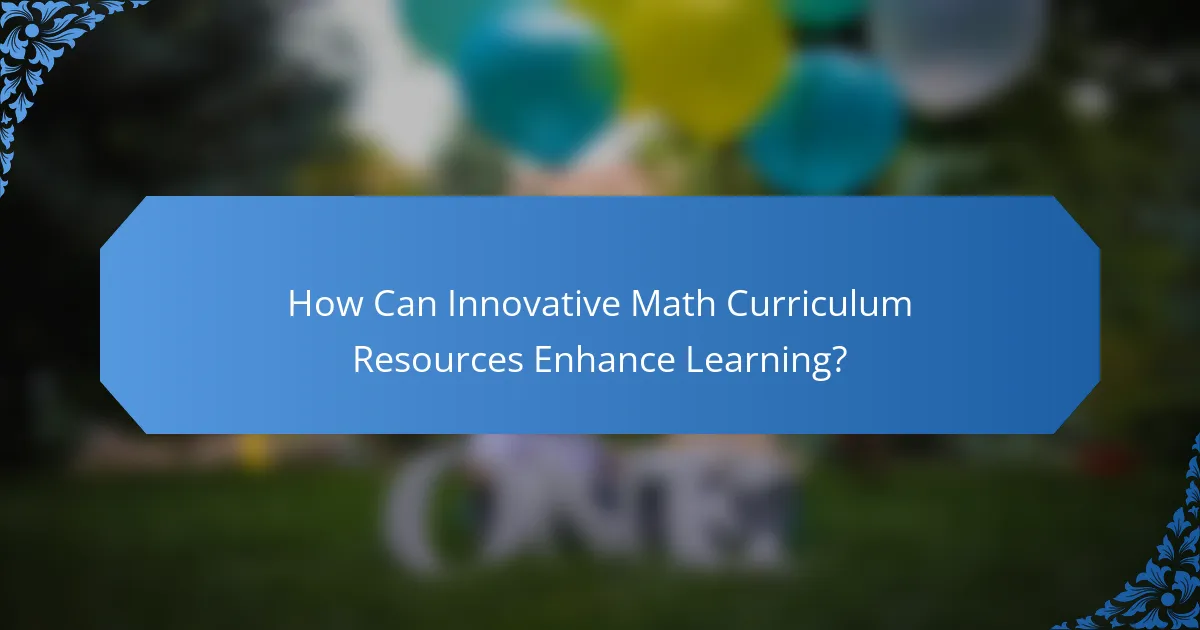
How Can Innovative Math Curriculum Resources Enhance Learning?
Innovative math curriculum resources can significantly enhance learning by making concepts more engaging and accessible. These resources leverage technology and interactive methods to foster deeper understanding and retention of mathematical principles.
Interactive Learning Platforms
Interactive learning platforms provide students with dynamic environments to explore math concepts through simulations and hands-on activities. Tools like virtual manipulatives and online math games allow learners to visualize problems, making abstract concepts more concrete.
When selecting an interactive platform, consider user-friendliness and alignment with curriculum standards. Popular platforms include Khan Academy and IXL, which offer tailored exercises and instant feedback to support individual learning paths.
Gamification Techniques
Gamification techniques incorporate game design elements into math learning to boost motivation and engagement. By using points, badges, and leaderboards, educators can create a competitive yet supportive atmosphere that encourages students to tackle challenging problems.
To effectively implement gamification, ensure that the rewards are meaningful and tied to learning objectives. For instance, platforms like Prodigy Math use game mechanics to motivate students while reinforcing math skills aligned with educational standards.
Adaptive Learning Tools
Adaptive learning tools personalize the educational experience by adjusting content based on individual student performance. These tools analyze responses to provide tailored exercises that target specific areas of need, promoting mastery at each learner’s pace.
When choosing adaptive tools, look for those that offer comprehensive analytics to track progress. Programs like DreamBox Learning and ALEKS are designed to adapt in real-time, ensuring that students receive the right level of challenge and support.
Real-World Problem Solving
Real-world problem-solving approaches connect math concepts to everyday situations, enhancing relevance and application. By presenting students with practical scenarios, educators can help them see the value of math in real life, such as budgeting or data analysis.
Incorporate projects that require students to solve real issues, like planning a community event or analyzing local data trends. This hands-on approach not only reinforces mathematical skills but also develops critical thinking and collaboration.
Collaborative Learning Environments
Collaborative learning environments encourage students to work together to solve math problems, fostering teamwork and communication skills. Group activities and peer tutoring can enhance understanding as students explain concepts to one another.
To create effective collaborative settings, establish clear roles and objectives for group work. Tools like Google Classroom can facilitate collaboration, allowing students to share resources and ideas seamlessly while working on math projects together.
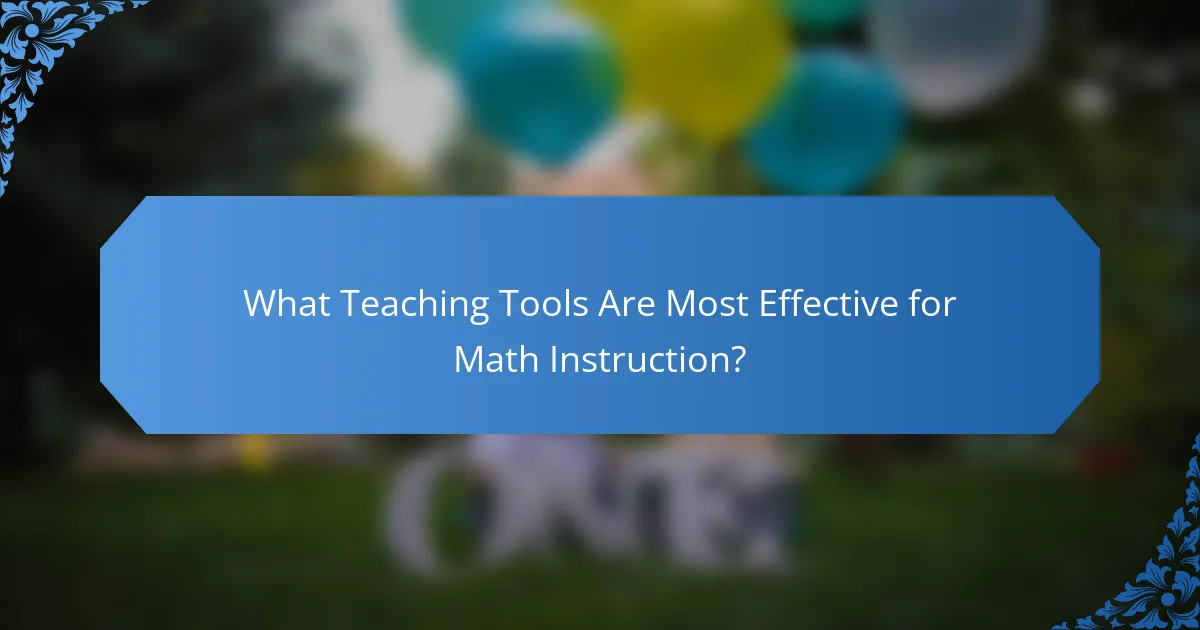
What Teaching Tools Are Most Effective for Math Instruction?
Effective teaching tools for math instruction enhance engagement and understanding. Tools such as digital whiteboards, math software applications, online assessment tools, and video tutorials can significantly improve student learning outcomes.
Digital Whiteboards
Digital whiteboards facilitate interactive lessons by allowing teachers and students to collaborate in real-time. These tools enable the display of complex equations and visual aids, making abstract concepts more tangible.
When using digital whiteboards, consider incorporating features like annotation and screen sharing. This can help students visualize problems and solutions more effectively. Popular options include Google Jamboard and Microsoft Whiteboard.
Math Software Applications
Math software applications provide interactive environments for students to practice and explore mathematical concepts. Programs like GeoGebra and Desmos allow users to manipulate variables and see immediate results, fostering deeper understanding.
Choose applications that align with curriculum standards and are user-friendly. Look for features such as step-by-step problem-solving and customizable exercises to cater to different learning levels.
Online Assessment Tools
Online assessment tools streamline the evaluation process, offering immediate feedback to both teachers and students. Platforms like Kahoot! and Quizizz make assessments engaging through gamification, which can boost participation.
When selecting assessment tools, prioritize those that provide detailed analytics on student performance. This data can help identify areas needing improvement and inform future instruction.
Video Tutorials and Webinars
Video tutorials and webinars serve as valuable resources for both students and educators. They can cover a wide range of topics, from basic arithmetic to advanced calculus, often featuring expert explanations and demonstrations.
Utilize platforms like Khan Academy or YouTube for accessible content. Encourage students to engage with these resources outside of class to reinforce learning. Ensure the videos are aligned with the curriculum to maximize their effectiveness.

How Can Educators Engage Students in Math?
Educators can engage students in math by incorporating interactive and innovative teaching methods that promote active participation. Strategies such as project-based learning, competitions, hands-on activities, and technology integration can significantly enhance student interest and understanding in mathematics.
Project-Based Learning
Project-based learning (PBL) involves students working on real-world problems or projects over an extended period. This approach encourages collaboration and critical thinking, as students must apply mathematical concepts to find solutions. For example, a project could involve designing a budget for a community event, allowing students to practice addition, subtraction, and percentages in a practical context.
To implement PBL effectively, educators should clearly define project goals and provide guidelines while allowing students the freedom to explore their ideas. Regular check-ins can help keep students on track and ensure they are applying the necessary math skills.
Math Competitions and Challenges
Participating in math competitions and challenges can motivate students by fostering a sense of achievement and camaraderie. These events often encourage students to tackle complex problems and think creatively under pressure. Schools can organize local competitions or participate in national events, providing students with opportunities to showcase their skills.
To maximize engagement, educators should create a supportive environment where students feel comfortable taking risks and learning from mistakes. Encouraging teamwork can also enhance the experience, as students can share strategies and solutions with one another.
Hands-On Activities
Hands-on activities allow students to physically manipulate materials to understand mathematical concepts better. For instance, using blocks to teach fractions or measuring ingredients for a recipe can make abstract ideas more tangible. These activities cater to various learning styles and can be particularly effective for younger students.
When planning hands-on activities, educators should ensure that the materials are readily available and that the activities align with curriculum standards. Simple tasks, such as creating graphs with everyday items, can effectively reinforce math skills while keeping students engaged.
Incorporating Technology
Incorporating technology into math education can enhance engagement and provide interactive learning experiences. Tools such as educational software, online games, and virtual simulations can make learning more dynamic and accessible. For example, using apps that allow students to visualize geometric concepts can deepen their understanding.
Educators should choose technology that complements their teaching objectives and is user-friendly for students. It’s essential to balance screen time with traditional methods to ensure a well-rounded approach to math education. Regularly assessing the effectiveness of these tools can help educators refine their strategies and maximize student engagement.
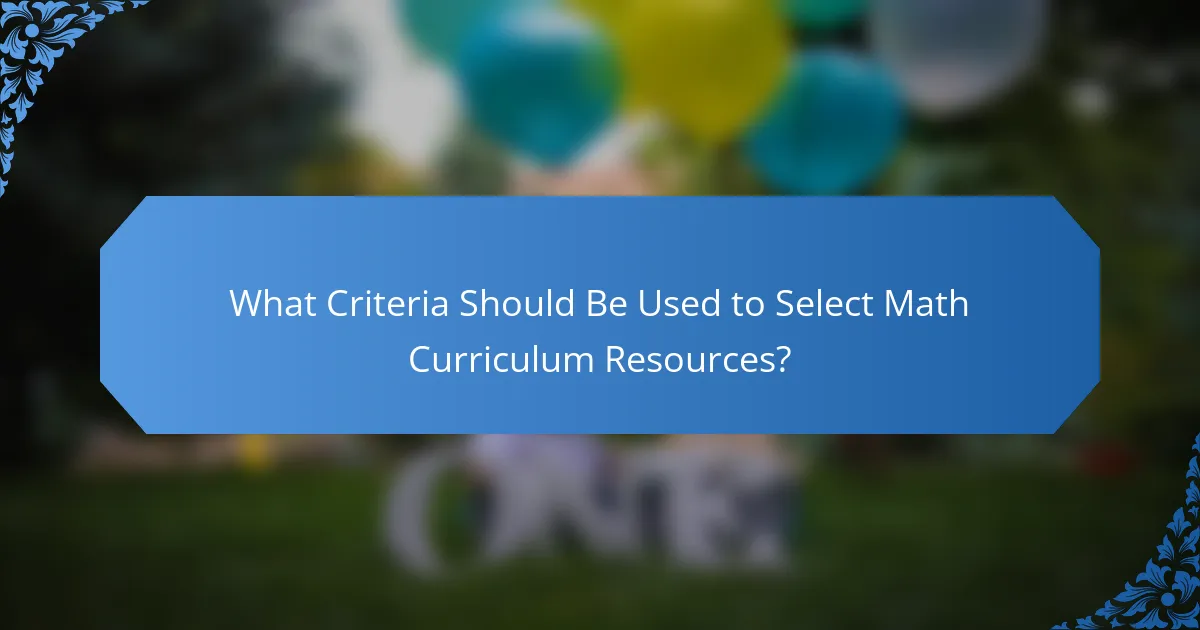
What Criteria Should Be Used to Select Math Curriculum Resources?
Selecting math curriculum resources requires careful consideration of alignment with educational standards, usability, and evidence of effectiveness. These criteria ensure that the materials not only meet academic requirements but also engage students and support diverse learning needs.
Alignment with Standards
Curriculum resources should align with local and national educational standards, such as the Common Core State Standards in the United States or the National Curriculum in the UK. This alignment ensures that the materials cover essential skills and concepts required at each grade level.
When evaluating resources, check for explicit references to these standards in the curriculum guides or resource descriptions. This can help ensure that students are learning relevant content that prepares them for assessments and future academic challenges.
Usability and Accessibility
Usability refers to how easily teachers and students can navigate and utilize the curriculum resources. Look for materials that are user-friendly, with clear instructions and intuitive layouts. Resources should also be adaptable for various teaching styles and classroom settings.
Accessibility is crucial for accommodating diverse learners, including those with disabilities. Ensure that resources are compatible with assistive technologies and provide multiple means of engagement, representation, and expression to support all students.
Evidence of Effectiveness
Effective curriculum resources should be backed by research demonstrating their impact on student learning outcomes. Look for studies or reports that show improvements in student performance or engagement when using the materials.
Consider seeking out resources that have been pilot-tested in real classroom settings and have received positive feedback from educators. This evidence can provide confidence that the curriculum will be beneficial for your students.

What Are the Costs Associated with Math Curriculum Resources?
The costs associated with math curriculum resources can vary widely based on factors such as the type of materials, the level of technology integration, and the specific needs of the educational institution. Schools may spend anywhere from a few hundred to several thousand dollars annually on curriculum resources, including textbooks, digital tools, and professional development.
Types of Costs
Costs for math curriculum resources generally fall into several categories: direct costs, indirect costs, and opportunity costs. Direct costs include purchasing textbooks, software licenses, and online subscriptions. Indirect costs may involve training teachers to effectively use these resources and maintaining technology infrastructure. Opportunity costs refer to the potential benefits lost when funds are allocated to one resource over another.
Budgeting for Math Curriculum Resources
When budgeting for math curriculum resources, schools should consider both initial and ongoing expenses. Initial costs may include one-time purchases of textbooks or software, while ongoing costs could involve subscription fees and updates. A practical approach is to allocate a percentage of the overall education budget, typically around 5-10%, specifically for curriculum resources.
Funding Sources
Schools can explore various funding sources to cover the costs of math curriculum resources. These may include state and federal grants, local education budgets, and private donations. Additionally, many educational technology companies offer discounts or grants for schools, which can significantly reduce expenses.
Cost-Benefit Analysis
Conducting a cost-benefit analysis helps schools determine the value of investing in specific math curriculum resources. This involves evaluating the expected educational outcomes against the costs incurred. For instance, if a new digital tool improves student engagement and performance significantly, the investment may be justified despite higher upfront costs.


